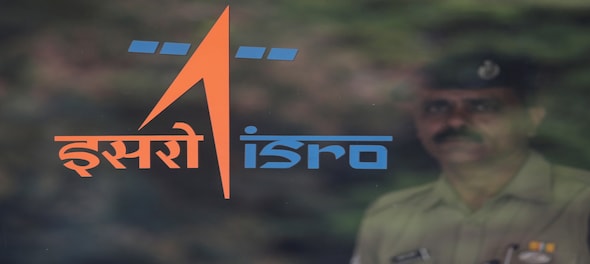
The Small Satellite Launch Vehicle (SSLV) of the Indian Space Research Organisation (ISRO) will make its maiden flight from Satish Dhawan Space Centre in Sriharikota on August 7 at 9.18 am. Besides its scientific and flight instruments on board, the rocket will also carry a few special packages. Among them is the Indian tricolour, which will be unfurled in space to mark the 75th year of independence.
The SSLV weighs around 120 tonnes and is about 34 metre tall, making it the smallest and lightest commercial rocket built by ISRO. The rocket can put a payload of 500 kg up to 500 km in planar orbit. But unlike bigger rockets, the SSLV can also carry mini, micro, or nanosatellites (10 to 500 kg mass). The smaller rocket offers benefits like launch-on-demand feasibility and minimal launch infrastructure requirements and aims to carve out a space for ISRO in the lucrative small satellite launch market. The SSLV can be assembled within a fortnight.
The SSLV will be carrying two payloads on its maiden flight. The first is the EOS-02, an indigenously developed earth observation satellite, which will offer advanced optical remote sensing operations within the infrared wavelength with high spatial resolution.
The second satellite payload is the 8kg 8U Cubesat AzaadiSAT, which has been developed by 750 school girls across 75 schools in rural India. The satellite will carry a "special" space song along with the national anthem sung by Rabindranath Tagore to be played to honour the country. But just as importantly, it will be carrying a UHF-VHF transponder working in the 420-450MHz wavelength, which is used for ham radio, for creating a space-based LoRA (long-range radio) gateway. The experiment will determine if important discrete devices like sea buoys, tsunami buoys, and landslide monitoring sensors can communicate over long distances using LoRA satellites. Other instruments are a solid state PIN diode-based radiation counter and a selfie camera.
The SSLV weighs around 120 tonnes and is about 34 metre tall, making it the smallest and lightest commercial rocket built by ISRO. The rocket can put a payload of 500 kg up to 500 km in planar orbit. But unlike bigger rockets, the SSLV can also carry mini, micro, or nanosatellites (10 to 500 kg mass). The smaller rocket offers benefits like launch-on-demand feasibility and minimal launch infrastructure requirements and aims to carve out a space for ISRO in the lucrative small satellite launch market. The SSLV can be assembled within a fortnight.
"The SSLV is a ready-to-transfer vehicle with modular and unified systems and with standard interfaces for end-to-end industrial production,” an ISRO official stated. ISRO chairman S Somanath called the SSLV a “game changer”.
The SSLV will be carrying two payloads on its maiden flight. The first is the EOS-02, an indigenously developed earth observation satellite, which will offer advanced optical remote sensing operations within the infrared wavelength with high spatial resolution.
The second satellite payload is the 8kg 8U Cubesat AzaadiSAT, which has been developed by 750 school girls across 75 schools in rural India. The satellite will carry a "special" space song along with the national anthem sung by Rabindranath Tagore to be played to honour the country. But just as importantly, it will be carrying a UHF-VHF transponder working in the 420-450MHz wavelength, which is used for ham radio, for creating a space-based LoRA (long-range radio) gateway. The experiment will determine if important discrete devices like sea buoys, tsunami buoys, and landslide monitoring sensors can communicate over long distances using LoRA satellites. Other instruments are a solid state PIN diode-based radiation counter and a selfie camera.
Check out our in-depth Market Coverage, Business News & get real-time Stock Market Updates on CNBC-TV18. Also, Watch our channels CNBC-TV18, CNBC Awaaz and CNBC Bajar Live on-the-go!
